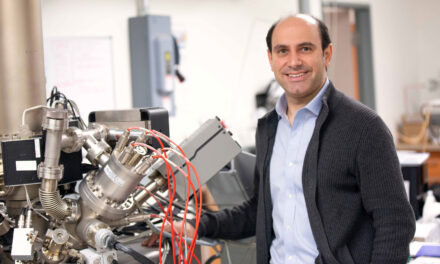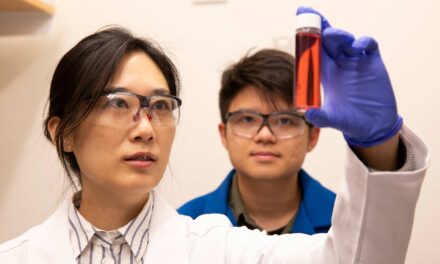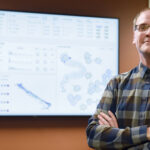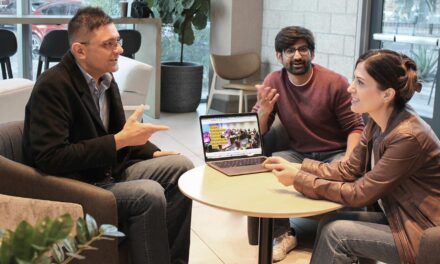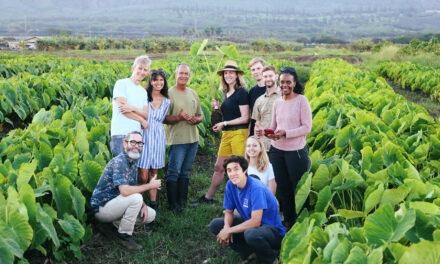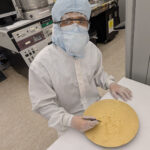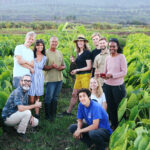
Discovering novel materials autonomously
Qijun Hong earned the 2024 CALPHAD Young Leader award for materials research advancements
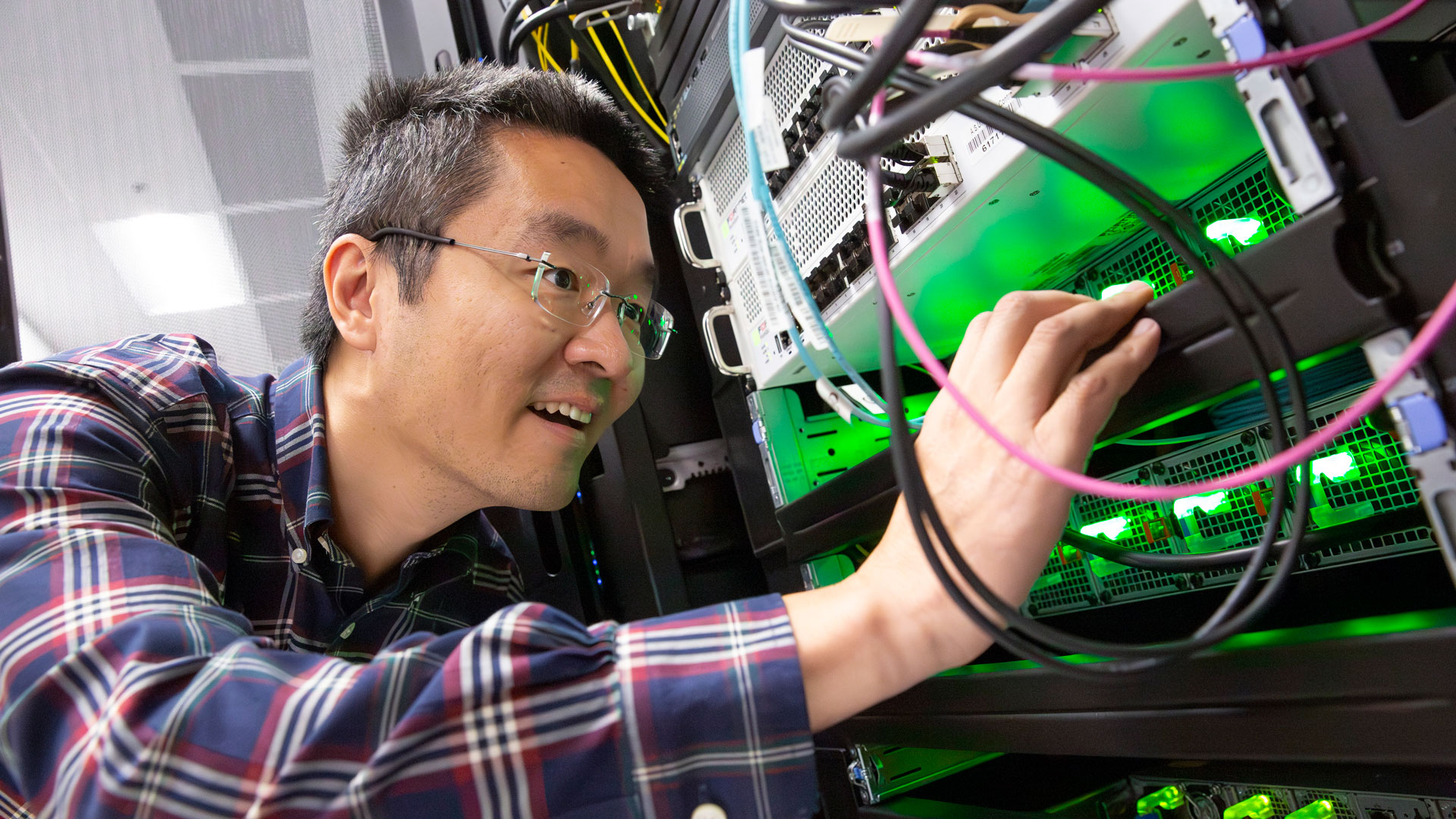
Think about the fur of a fluffy teddy bear or the soft petals of a rose. Then imagine the largest known planet in the cosmos, ROXs 42Bb, which can fit more than 3,000 planet Earths inside of it. While distinctly different from each other, at their core, all these objects are made of the same thing: matter.
Matter, in the form of various materials, is the basic building block of every physical thing in the universe. Yet, people often have a limited fundamental understanding of materials properties, which hinders progress on scientific and technological discoveries that could solve society’s most pressing issues.
Scientists have been studying materials for many years, and their breakthroughs have led to essential technologies used today. However, despite significant investments of time, money and the dedication of researchers, we still have much to learn about materials. The biggest hurdle has been that studying materials’ properties is tedious and requires a great deal of intelligence beyond most people’s abilities.
Instead, what if scientists could primarily use computers to study materials? What if they could use a ChatGPT-like artificial intelligence, or AI, model for autonomous materials discovery? Could that be a reliable and efficient way to discover materials that lead to the next generation of technologies?
Qijun Hong, an assistant professor of materials science and engineering in the School for Engineering of Matter, Transport and Energy, part of the Ira A. Fulton Schools of Engineering at Arizona State University, received the 2024 CALPHAD Young Leader Award for his valuable
contributions to the materials science community. Hong uses calculation of phase diagrams, or CALPHAD, quantum mechanics and machine learning to autonomously predict materials’ theoretical properties years before they are physically developed.
“In 2015, I predicted a material with the highest melting temperature, and it was later confirmed in 2020 through a lab experiment,” Hong says. “Using this material, we can build more resilient engines for airplanes, rockets and other systems that work under extremely high-temperature environments.”
AI speeds up materials development
By leveraging the high-end computing power of ASU’s supercomputer, Sol, Hong studies, forecasts and designs materials with unique properties to solve modern engineering problems. His research has a diverse range of applications.
For example, Tesla’s Cybertruck, with its iconic body made of stainless steel, comes with various issues, including pointy edges, heaviness and, in sunny Arizona, reflections that might blind people on the freeway.
“It’s almost impossible to bend such a big stainless steel plate,” Hong says. “Using CALPHAD, we can find a material that is as rigid as stainless steel but also easy to bend.”
Recently, Hong developed a software called SLUSCHI, which uses AI and quantum mechanics to automate the calculation of materials’ melting temperature and other properties.
“Melting temperature is a very high-level, complex property to calculate. It takes days and sometimes weeks,” Hong says. “SLUSCHI is like another person here autonomously telling these computers what calculations to do next so they can work 24/7 for me, allowing me to spend time on other parts of my research.”
Hong believes that it is imperative that materials scientists add computers to their tools arsenal and is taking the lead by developing a ChatGPT-like AI model, Melting Temperature Predictor, or MAPP, for materials discovery. Using density functional theory, which is one of the most accurate and fastest methods for materials’ properties calculations at the quantum level, he generates a lot of data that feeds into the AI model.
MAPP is open to the public and can generate materials’ melting temperature in less than five seconds — with calculation times only limited by internet speed. This calculation would take days, if not weeks, when done without the help of AI.
While the progress is impressive, Hong still has hurdles he needs to overcome to fully rely on computers for materials discovery.
“This is much faster than traditional quantum mechanics calculations, but it’s still less accurate,” he says. “But I have no doubt that this is the future of materials research.”
Just as self-driving cars took a long time to materialize, Hong is confident that with constant iteration, the model will get better over time.
Unlocking possibilities in materials research through collaboration

Hong holding his CALPHAD Young Leader Award. Photographer: Roger Ndayisaba/ASU
Prior to joining ASU, Hong was a thriving machine learning scientist at Amazon. Encouraged by his long-term collaborator, ASU Regents Professor Alexandra Navrotsky, a faculty member in the School for Engineering of Matter, Transport and Energy and the School of Earth and Space Exploration, he decided to move to the Valley of the Sun. Hong and Navrotsky, who is also the director of the Center for Materials of the Universe, work together to predict better materials for extremely high-temperature and high-pressure applications.
“Our research complements each other,” Hong says. “We often work on the same material; I do computation, predicting new properties, and she does lab experiments to test and validate my assumptions.”
The feedback loop created by their process leads to creative and innovative ways to do materials research.
A renowned chemist and materials researcher, Navrotsky says, “I have known and collaborated with Qijun Hong since he was a graduate student, and I was delighted when he got a faculty position at ASU after I moved here.” “He is a brilliant and productive theorist who knows how to relate computation and experiment. He is also a delightful person.”
Receiving the CALPHAD Young Leader Award affords Hong a board seat on the CALPHAD board committee whose goal is to promote materials’ properties discovery through computational thermodynamics. He will also be on the editorial team of the CALPHAD journal. The award is given to only one young researcher every year and is a stamp of recognition for their valuable contribution to the CALPHAD community.
As only the third person to ever receive this award, Hong is excited to continue making progress on his research and learning from his colleagues through reviewing papers submitted to the journal.
One day, Hong might discover a material that could potentially enable people to get to the moon and back more safely.
“When rocket ships re-enter the Earth’s atmosphere, the friction leads to an extremely high temperature,” Hong says. “We need to discover materials to protect our astronaut and space shuttle.”


